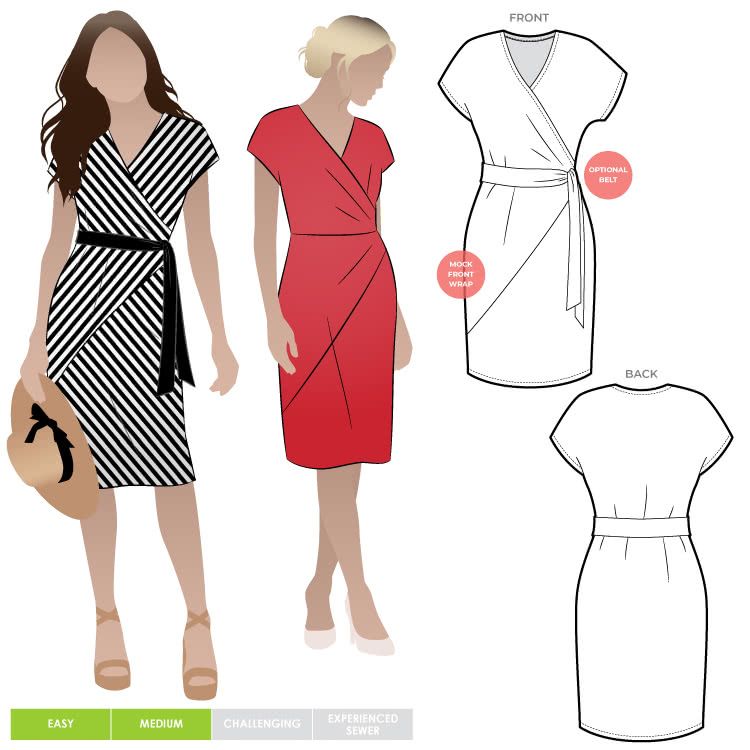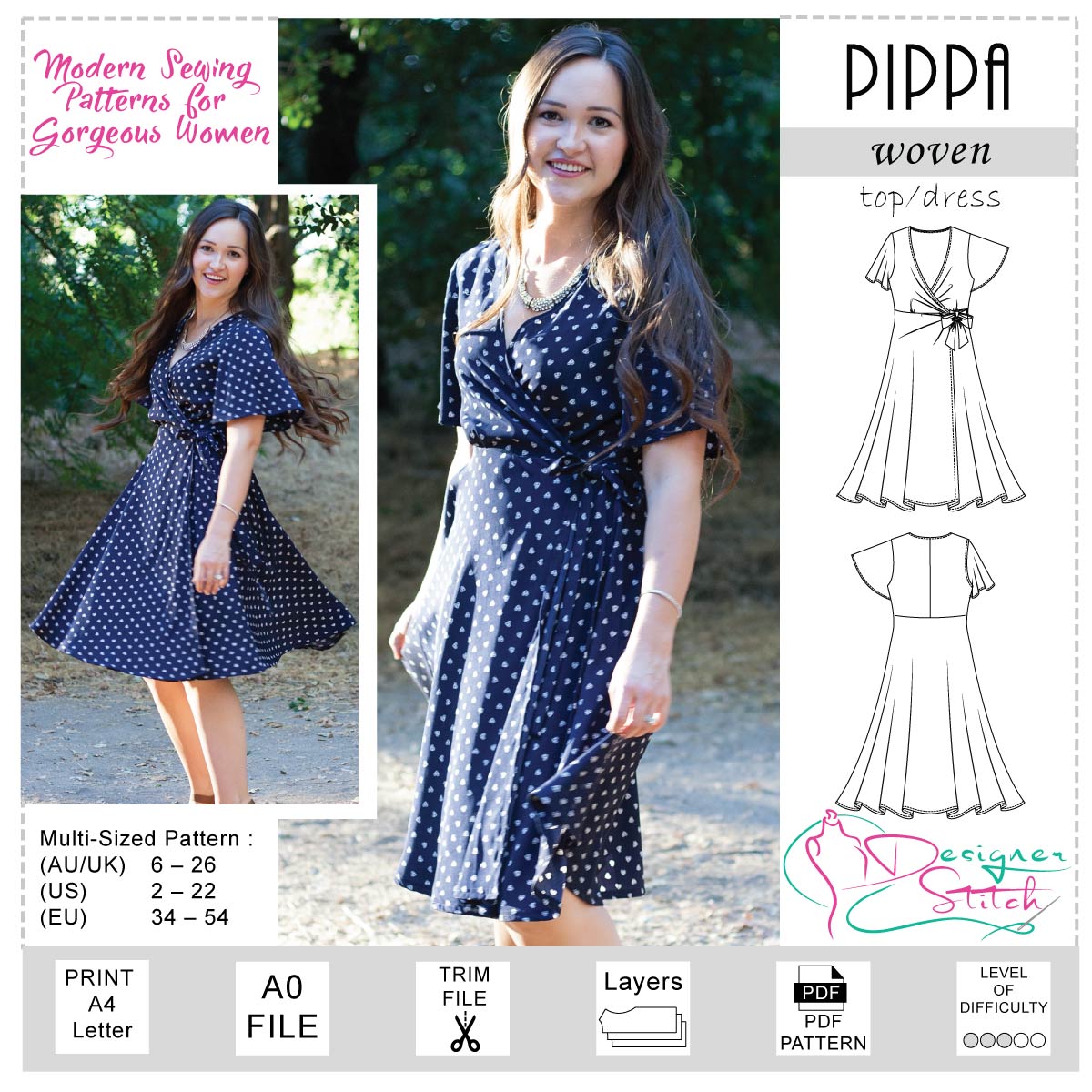The Ultimate Guide to Wrap Dress Patterns for a Chic and Sophisticated Look
The allure of wrap dress patterns lies in their versatility and timeless elegance. These designs, characterized by their distinctive overlapping fabric panels, have been a staple in women’s fashion for decades. Wrap dresses are not just a garment; they are a style statement that exudes confidence and grace. The key to embracing this chic and sophisticated look is understanding the nuances of wrap dress patterns.

Understanding Wrap Dress Patterns
Wrap dress patterns are essentially sewing patterns that allow for the creation of dresses with a wrap-around silhouette. The design typically features a front closure formed by wrapping one side of the dress across the other and securing it with a tie or button. This design element not only flatters various body types but also offers ease of movement and a unique aesthetic appeal.
Historical Significance and Evolution
The concept of wrap dress patterns can be traced back to traditional garments from various cultures, where wraps and drapery were used to create clothing. However, it was Diane von Fürstenberg who truly popularized the wrap dress in the 1970s, turning it into a fashion icon. Since then, the wrap dress has evolved, incorporating modern cuts and materials while retaining its classic charm.

Why Wrap Dress Patterns are a Wardrobe Essential
Wrap dress patterns are a wardrobe essential for several reasons. Firstly, they are incredibly versatile, suitable for both casual and formal occasions. Secondly, the wrap design accentuates the waist and creates an hourglass figure, making it a flattering choice for most body shapes. Lastly, the ease of wear and the ability to adjust the fit according to one’s comfort make wrap dresses a practical and stylish option.
Choosing the Right Wrap Dress Pattern
Selecting the right wrap dress pattern is crucial to achieving that chic and sophisticated look. Consider factors such as the fabric type, the level of difficulty in sewing, and the desired silhouette. For beginners, simpler patterns with fewer pieces may be more suitable, while experienced sewers can explore more complex designs with intricate details.

Fabric Selection and Care
The choice of fabric plays a significant role in determining the final look and feel of a wrap dress. Lightweight fabrics such as silk and chiffon are ideal for creating flowy, elegant dresses, while sturdier materials like cotton or wool can be used for more structured designs. Additionally, understanding the care requirements for different fabrics ensures that your wrap dress maintains its shape and quality over time.
Accessorizing Wrap Dresses
To truly elevate the sophistication of a wrap dress, accessories are a must. Simple yet elegant jewelry can enhance the dress’s neckline, while a statement belt can further accentuate the waist. The choice of shoes, bags, and outerwear should complement the dress’s style, whether it’s a casual day look or a more formal evening attire.

Mastering the Art of Wrap Dress Patterns
Mastering the art of wrap dress patterns involves not only sewing skills but also an understanding of fashion and personal style. By experimenting with different patterns, fabrics, and accessories, one can create a collection of wrap dresses that reflect individual taste and flair. Remember, the key to a chic and sophisticated look is confidence, and wrap dress patterns provide the perfect canvas to express that.






